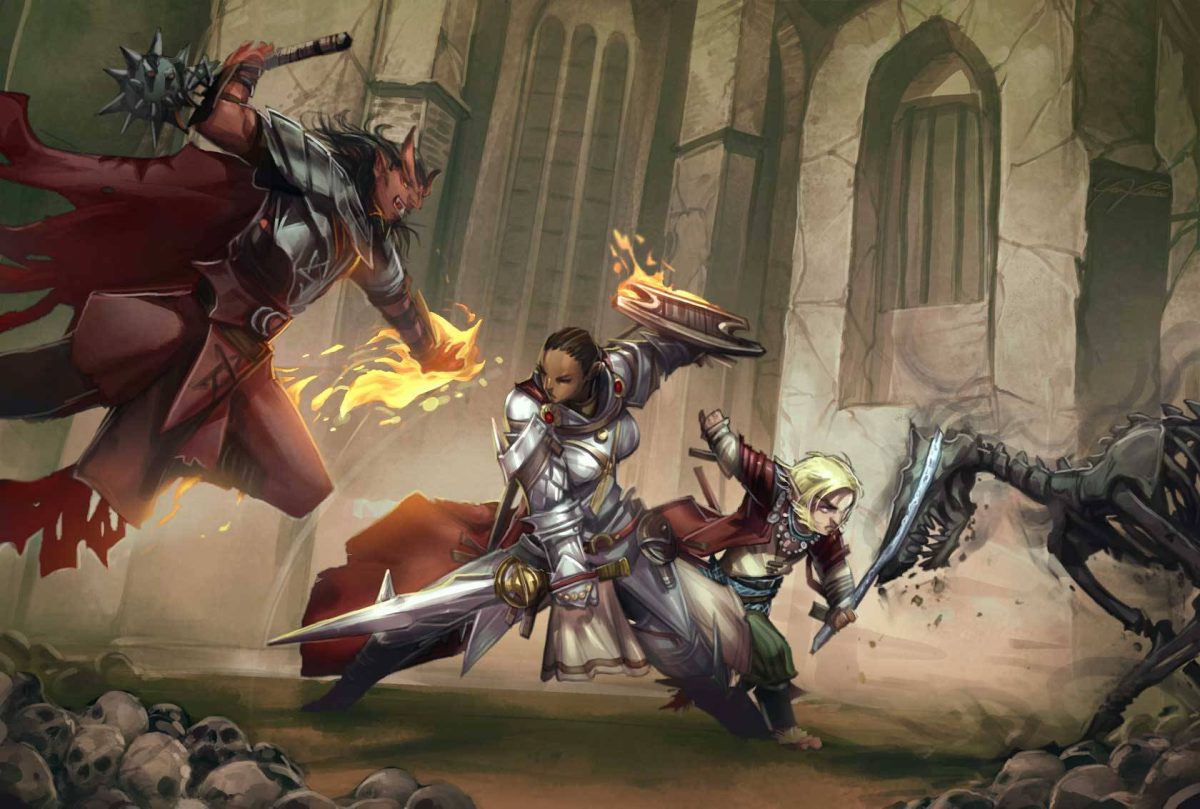Picture this: Our intrepid heroes stumble into the midst of a plundering horde of goblins. Blades clash, magic missiles explode, and certain doom seems but one failed saving throw away. Then, in a moment of sheer lunacy, Bree Greenbottle, the halfling rogue, pulls out a white flag and starts doing an interpretive dance. For a moment, the goblins gape in utter bewilderment, and then they burst into maniacal fits of laughter. And just like that, what could have been a gruesome slaughter turns into a dance-off. Let’s look at how you can make D&D combat fun and memorable for everyone at your table.
Watch the Video | Buy TTRPG Books and Accessories | More Game Content
Ok, so that story was a little ridiculous, but let’s face it, not as ridiculous as some of the things that D&D players do! But that’s one of the beautiful things about D&D. Not every combat encounter needs to end in a bloodbath. Sometimes the most unexpected, exciting, and hilarious outcomes occur when encounters go in unanticipated directions. When we leave things open-ended, we allow our players to help create the story.
We all love epic fights and daring victories, but there’s something really special about the unexpected happening in a game of D&D. Here are some ways you can encourage those unexpected outcomes.
Options Make D&D Combat Fun for Your Players
As a DM, you need to create options for your players. In most circumstances, most creatures would not want to fight to the death. If we’re talking about a group of bandits who were hired to attack your party, they probably won’t care enough to keep fighting until they’re dead. Most creatures are not going to be so willing to die, especially if there are low or no stakes.
So, here are three creative options for you to get your bad guys out of a fight:
Surrender is Always an Option
It adds realism. As we said, most creatures aren’t willing to fight to the death in every circumstance, so it’s realistic to think that some might just surrender. It also provides interesting opportunities for roleplaying, whether it’s encouraging your players to persuade or intimidate the bad guys, or just try some clever or crazy tactics. You can be creative in figuring out ways to force them to surrender. (And here’s a note for players: surrendering doesn’t mean giving up; it means looking for a creative solution to a conflict that doesn’t involve a pile of corpses!)
Retreat is Reasonable
Your bad guys in most circumstances are probably not going to want to fight to the death. Instead of surrendering, they may decide to run away when a certain condition is reached. For example, they reach half their hit points. When that condition is met, your bad guy jets! That gives your players an opportunity to be creative. It also provides some realism and unpredictability to what can be an extremely predictable situation. (And here’s a note for players: retreating is not chickening out! It’s just a way for you to find a tactic that allows you to live to fight another day.)
Talking it Out Can Change the Future
If your bad guys might not be willing to fight to the death in every situation, they might actually be willing, especially if the stakes are low or non-existent, to talk it out. Maybe they think that your players stole all the livestock from their village, but they didn’t. That gives your players an opportunity to try to talk some sense into these folks. Or maybe they’re a bunch of hooligans getting paid to take your guys down, and perhaps your players could offer to pay them more. There’s a lot of opportunity for some creative roleplaying, and your players might even come out of it with some new allies or friends. Those are the kinds of unexpected outcomes that make these things memorable, worth talking about, laughing about, and enjoying for a long time to come.
Meaningful Choices and Memorable Villains
Here’s a bonus for you: create options for your players by giving them meaningful choices anytime they enter into an encounter of any kind. You do this by offering them opportunities to – or encouraging them to – make different tactical choices. Encourage them to do things like prioritize targets. Put potential rewards into the encounter. Encourage them to take risks in order to get that reward.
The important thing here is allowing our players to help shape the story. There’s a lot of talk and debate about railroading players in D&D, and I’m not a fan of it. I love the collaborative nature of storytelling in D&D. At the same time, I understand that there is a direction that generally the story needs to go, and the most memorable stories are cohesive. However, there is room for players to make meaningful choices and influence the outcome of the overall story in D&D. THAT actually creates some of the most memorable, exciting, and unexpected outcomes.
One more little tidbit: creating these kinds of options and allowing for this open-ended conflict can actually give your villains the opportunity to show up later. Maybe they’re looking for vengeance or just plotting the death of your party. And that creates some more fun and memorable encounters.
How do you like to make D&D combat fun at your table? Let us know in the comments!
Watch the Video | Buy TTRPG Books and Accessories | More Game Content
If you purchase any products linked on our website, we may receive an affiliate commission.

